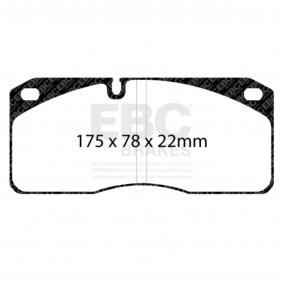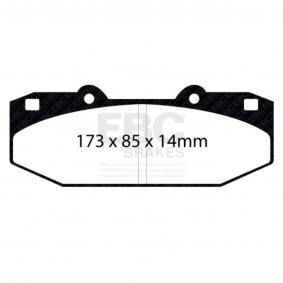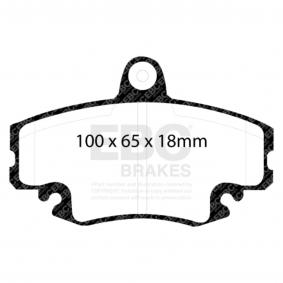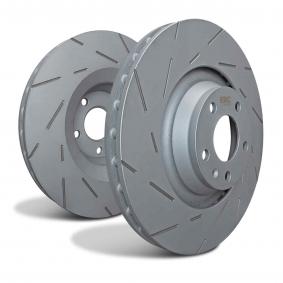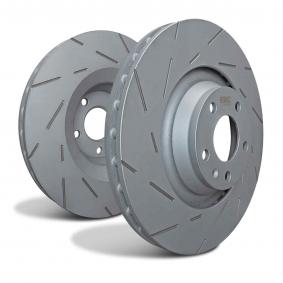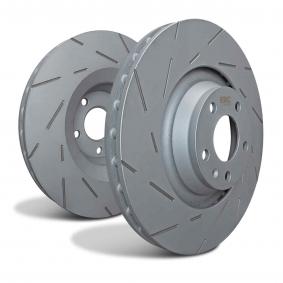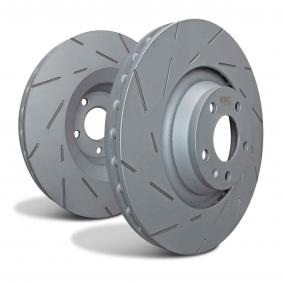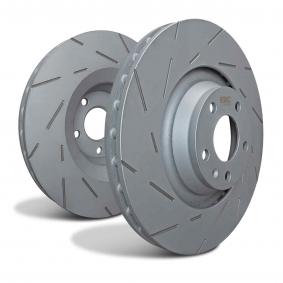Outlet discounts on thousands of products !
Outlet discounts on thousands of products !
- Home
-
PAGID Brake Pads Shape n°4918 Compound RSL29
PAGID
Brake Pads Shape n°4918 Compound RSL29
- to discover
-
new
-
new
-
new
-
new
-
new
-
new
-
new
-
new
PAGID Brake Pads Shape n°4918 Compound RSL29
RSL29 features very good modulation and release characteristics. It is a low metallic resin bonded material containing steel and aramid fibers. The friction level of the material maintains constant at a low-medium level. Another advantage is the easy bedding in behavior.
Very popular in club racing and track days. GT cars, Touring cars and prototype endurance racing. Due to excellent modulation characteristics also often used in sprint races.
All PAGID products are made in Germany!
Length x Width : 187,5 mm x 64 mm
Thickness : 16,3 mm
Car applications, dimensions and pad schemes are supplied as a guide. Please check your assembly before ordering
Rear brake pads for :
Porsche 718 Cayman GTS 4.0 982 (years 2016 à - ) - NB : cast iron brakes
Porsche 991 3.4 Carrera (years 2011 à 2015) - NB : iron brakes
Porsche 991.2 3.0 Carrera (years 2015 à - ) - NB : iron brakes
Porsche Boxster Spyder 981 (years 2015 à - )
Porsche Cayenne (years 2006 à - ) - NB : cast iron & ceramic brakes
VW Touareg (years 2008 à - ) - NB : ceramic brakes
On vehicle bedding-in procedure:
Step 1 - Breaking-in
Creating a perfect contact-pattern between rotor and brake pad surface.
10 stops with mid pressure and low temperature from 150 km/h (90 MPH) to approximately 80 km/h (50 MPH).
Step 2 - Heating-up
Warm up in order to initiate some core heat in the whole brake system.
A sequence of 5 stops with medium to high pressure from 180 km/h (112 MPH) to approximately 60 km/h (40 MPH) with maximum acceleration between the stops.
Step 3 - Recovery Stops
3 to 5 stops with mid pressure from 150 km/h (90 MPH) to approximately 80 km/h (50 MPH).
RSL29 features very good modulation and release characteristics. It is a low metallic resin bonded material containing steel and aramid fibers. The friction level of the material maintains constant at a low-medium level. Another advantage is the easy bedding in behavior.
Very popular in club racing and track days. GT cars, Touring cars and prototype endurance racing. Due to excellent modulation characteristics also often used in sprint races.
All PAGID products are made in Germany!
Length x Width : 187,5 mm x 64 mm
Thickness : 16,3 mm
Car applications, dimensions and pad schemes are supplied as a guide. Please check your assembly before ordering
Rear brake pads for :
Porsche 718 Cayman GTS 4.0 982 (years 2016 à - ) - NB : cast iron brakes
Porsche 991 3.4 Carrera (years 2011 à 2015) - NB : iron brakes
Porsche 991.2 3.0 Carrera (years 2015 à - ) - NB : iron brakes
Porsche Boxster Spyder 981 (years 2015 à - )
Porsche Cayenne (years 2006 à - ) - NB : cast iron & ceramic brakes
VW Touareg (years 2008 à - ) - NB : ceramic brakes
On vehicle bedding-in procedure:
Step 1 - Breaking-in
Creating a perfect contact-pattern between rotor and brake pad surface.
10 stops with mid pressure and low temperature from 150 km/h (90 MPH) to approximately 80 km/h (50 MPH).
Step 2 - Heating-up
Warm up in order to initiate some core heat in the whole brake system.
A sequence of 5 stops with medium to high pressure from 180 km/h (112 MPH) to approximately 60 km/h (40 MPH) with maximum acceleration between the stops.
Step 3 - Recovery Stops
3 to 5 stops with mid pressure from 150 km/h (90 MPH) to approximately 80 km/h (50 MPH).
Ref.: PFPA4918RSL29
See all the Brake pads PAGIDSee all PAGID products| Homologation | Non homologuée route |
|---|---|
| Oreca Reference | PFPA4918RSL29 |
| Manufacturer's reference | S4918R29001 |
| Brand | PAGID |


